The Chen Clan Ancestral Hall
With curiosity and a hint of trepidation, I began my exploration of Guangzhou—and the first official attraction I visited was the Chen Clan Ancestral Hall. It left one of the deepest impressions on me.
The ancestral halls and clan culture of southern China were entirely new to me. I had previously heard some of my Southeast Asian friends talk about family customs, such as visiting ancestral halls during festivals and holidays, and I had listened with great curiosity.
Now, being in Guangdong, my understanding of the cultural differences between northern and southern China has reached a new level.
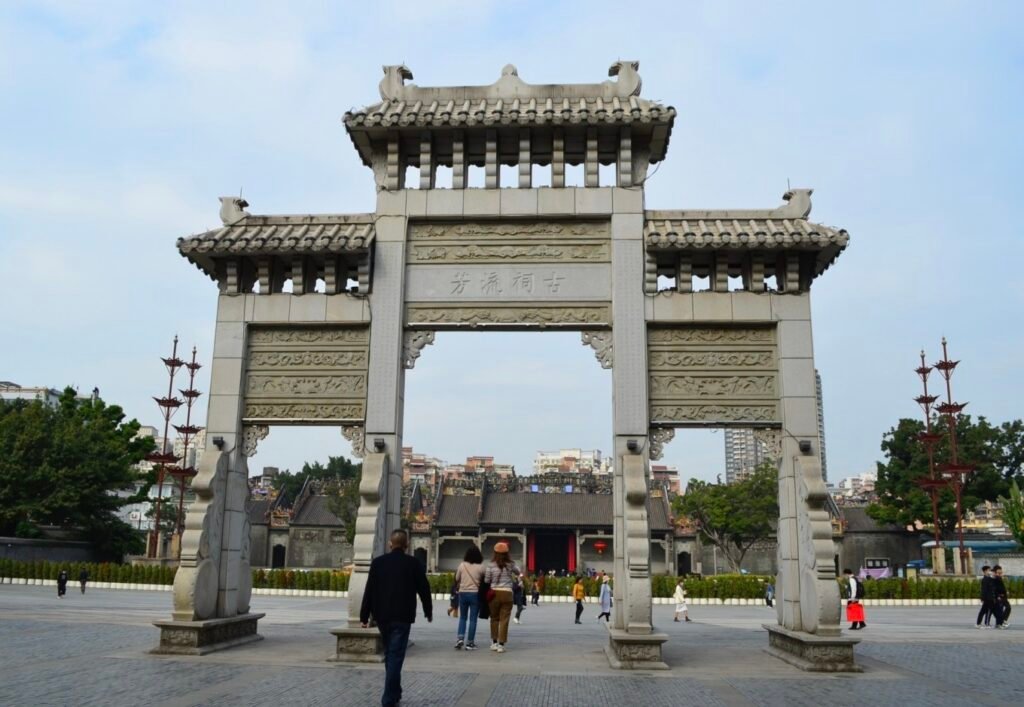
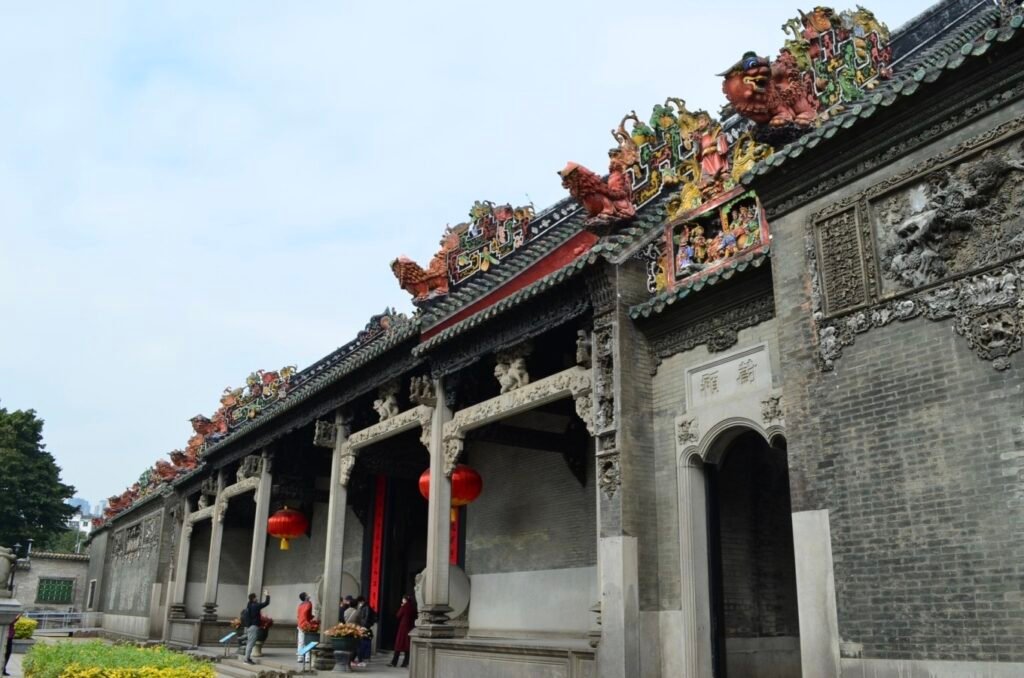
The Chen Clan Ancestral Hall, also known as the Chen Clan Academy, was built in the 14th year of Emperor Guangxu’s reign (1888) and completed in the 19th year (1894). It was funded by Chen clans from various parts of Guangdong province to serve as a shared ancestral hall. The site provided temporary accommodations for members of the Chen clan traveling to Guangzhou for imperial examinations, official appointments, or legal matters.
The ancestral hall covers 15,000 square meters and consists of nineteen individual buildings, separated by narrow Qingyun Alleys and connected by long corridors, with courtyards interspersed throughout. It is the largest, best-preserved, and most elaborately decorated example of Lingnan-style architecture in Guangdong province.
Since the early Republic of China era, the site has been repurposed as a school, museum, and printing workshop. In 1981, it underwent a complete restoration, and in 1983, it was reopened to the public.
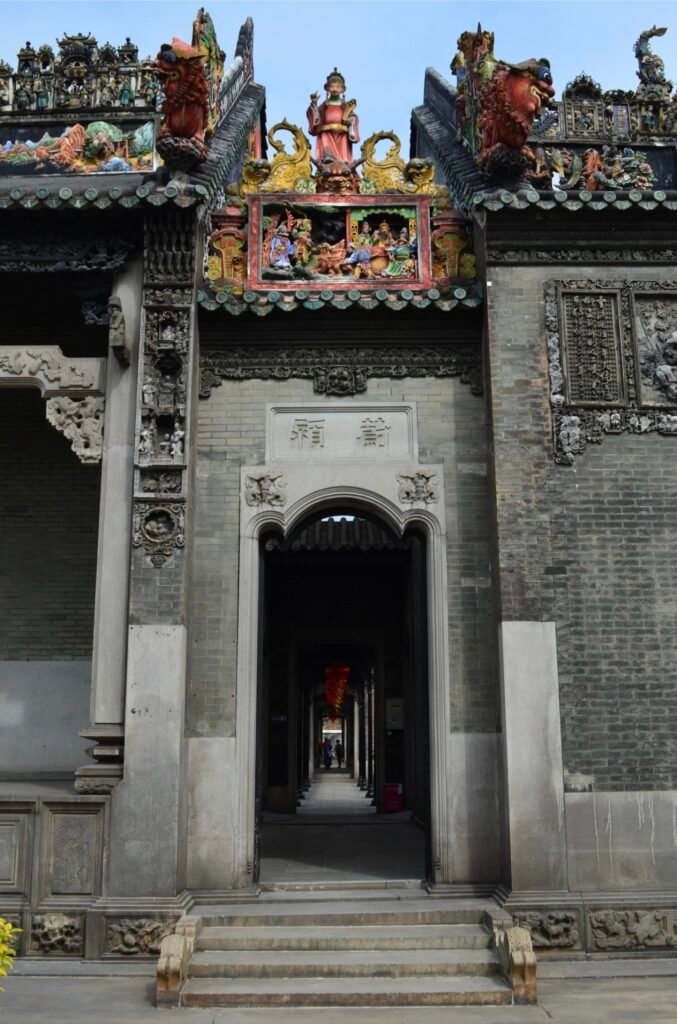
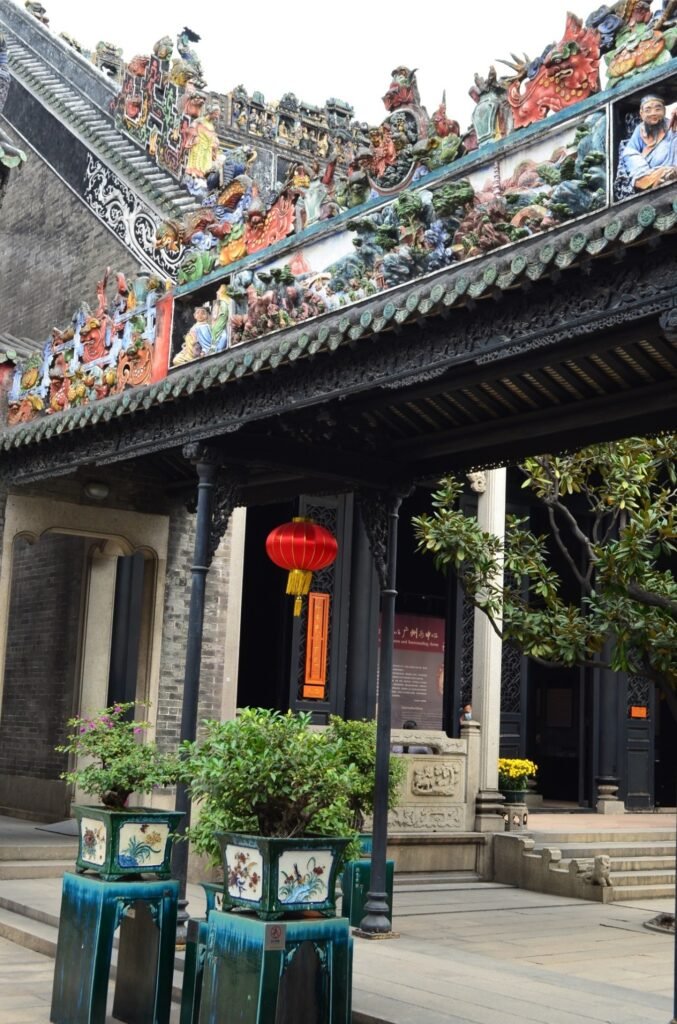
What amazed me most about the Chen Clan Ancestral Hall was its exquisite decorations.
Throughout the hall—on the eaves, halls, courtyards, and corridors—are intricate displays of wood carvings, stone carvings, brick carvings, clay sculptures, ceramic sculptures, ironwork, and paintings, creating a dazzling array of artistic styles. The craftsmanship alone is awe-inspiring, but upon closer inspection, each elaborate piece of decoration tells a story or references a classic tale—such as The Pavilion of Prince Teng, The Banquet of Peaches and Plum Trees, Romance of the Three Kingdoms, the Gathering of Heroes at Liangshan, The Eight Immortals Offering Birthday Greetings, Magpies Landing on Plum Blossoms, A House Full of Gold and Jade, and Spring Swallows in the Apricot Grove. These works feature themes ranging from auspicious animals and plants to folklore and literary masterpieces, embodying the breadth and detail of Lingnan culture.
I recommend setting aside plenty of time for your visit, bringing a phone and headphones to listen to audio explanations by scanning QR codes as you explore. This way, you’ll better appreciate the charm of this “pearl of Lingnan architectural art.” The Chen Clan Ancestral Hall truly deserves its reputation as the pinnacle of Lingnan folk architectural decoration.
In addition, what truly impressed me about Guangzhou is that the ticket prices for attractions, including museums, are very affordable—almost symbolic—encouraging people to visit and explore these places. Moreover, the attractions are thoughtfully designed with human-centered care. For example, the Chen Clan Ancestral Hall provides plenty of seating areas, allowing visitors, especially the elderly, to rest at any time, which is highly commendable!
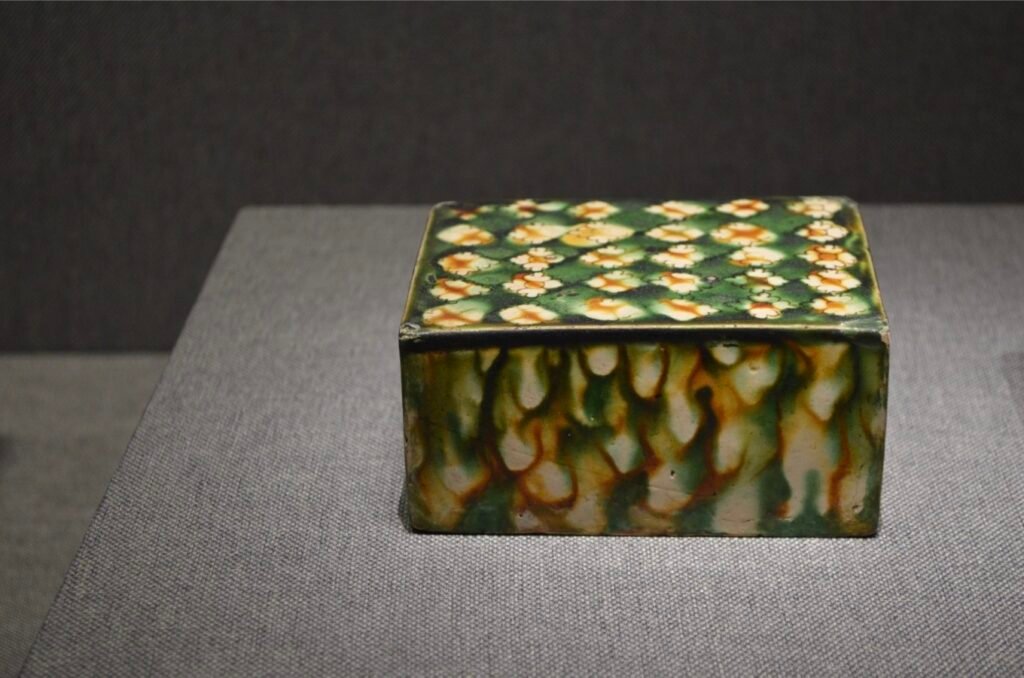

Among the thousands of artifacts unearthed, the most captivating are the silk-threaded jade burial suit and the intricately carved dragon-and-phoenix jade pendant. The burial suit is composed of 2,291 jade pieces sewn together with silk threads and backed with linen. The jade pendant, featuring intertwined dragon and phoenix motifs, dates back over 2,000 years. It not only serves as the museum’s emblem but also stands as an important symbol of Guangzhou’s ancient cultural heritage.
The adornments of Zhao Mo’s wives are also fascinating. You can instantly tell each wife’s rank just by looking at the display of their respective ornaments. However, the ancient practice of human sacrifice was undeniably brutal. Even the king’s most favored wife was not spared—she was buried alongside him. In total, 15 attendants, including wives and servants, were sacrificed and entombed within and around the burial chamber.

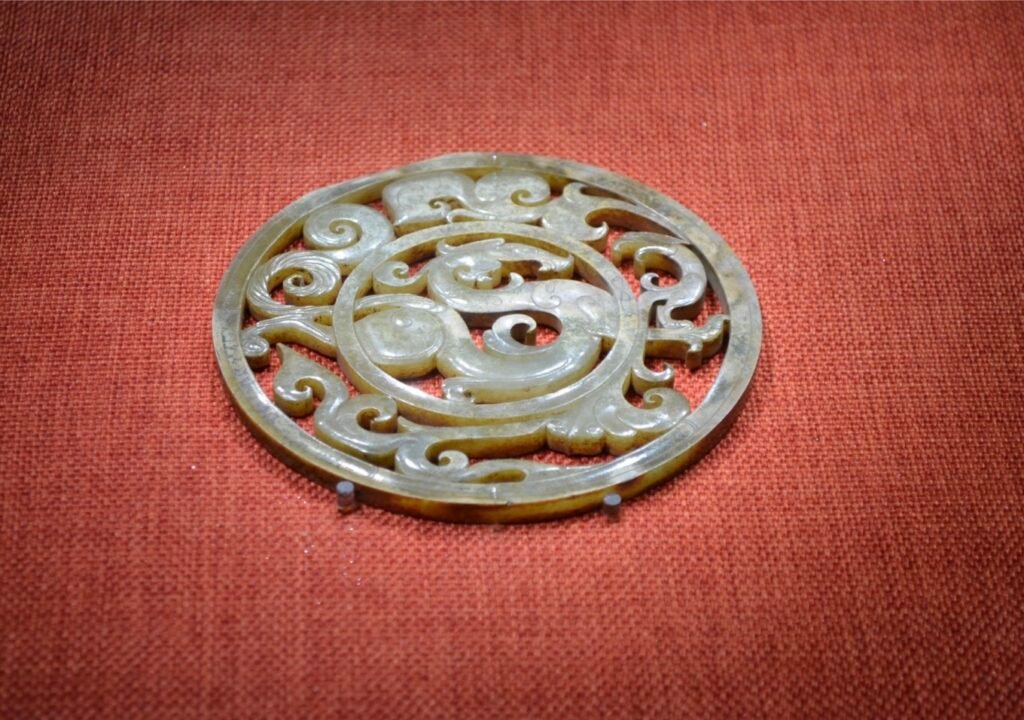
There were other exhibits that also left a lasting impression on me. For example, the artifact in the image below is a grill used by people during the Han dynasty, and it looks almost identical to modern barbecue grills. After reading some books, I learned that before the Song dynasty, most cooking methods were dominated by grilling and boiling.
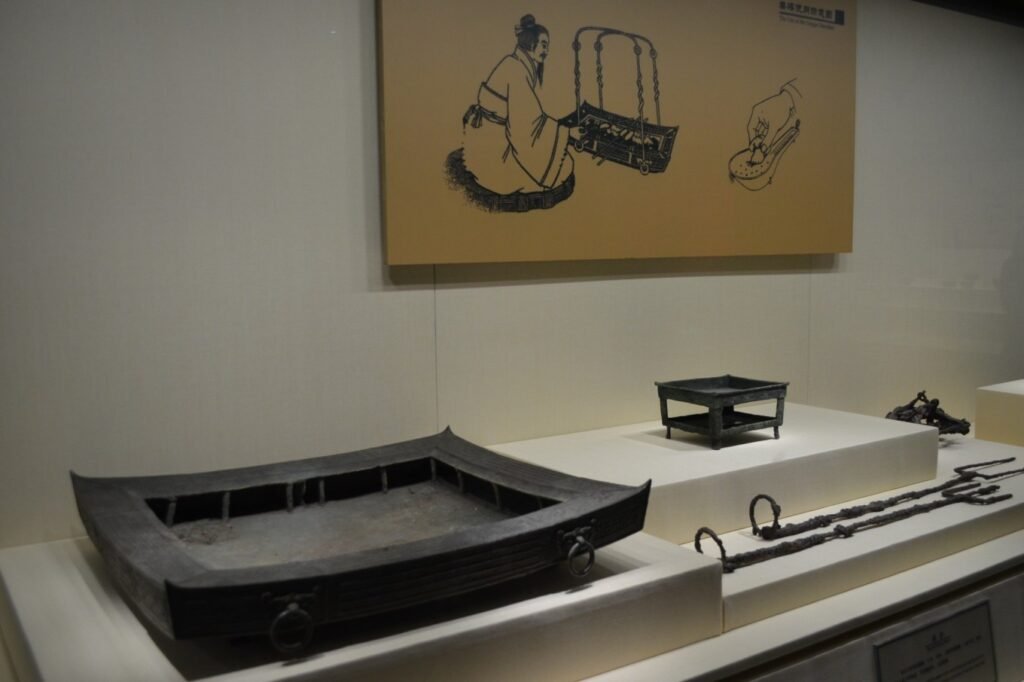

The Guangdong Museum spans five floors, with most of the exhibits concentrated on the third and fourth floors. The museum offers a diverse range of displays, including galleries on natural resources, historical culture, and exhibitions showcasing distinctive features of the Lingnan region, such as Chaozhou woodcarving and Duan inkstones.
Chaozhou woodcarving has a long history and is one of the traditional woodcarving styles of China. It is known for its intricate and elaborate craftsmanship, with designs that are rich, delicate, and vibrant. The carvings often exude a strong sense of everyday life and deep folk traditions. Since most Chaozhou woodcarvings are lacquered and gilded after carving, they are also referred to as “gold-lacquered woodcarvings.” The level of detail and precision in these works is outstanding, and the brilliant lacquer-and-gold technique gives them a dazzling, opulent appearance. Chaozhou woodcarving is considered one of the four great woodcarving traditions of China.
Among these works, the most elaborate are the shrines, and the “Yongqing Hall” shrine displayed below is a prime example. Standing 3.28 meters tall, it is recognized as one of the largest and most exquisite shrines ever preserved.
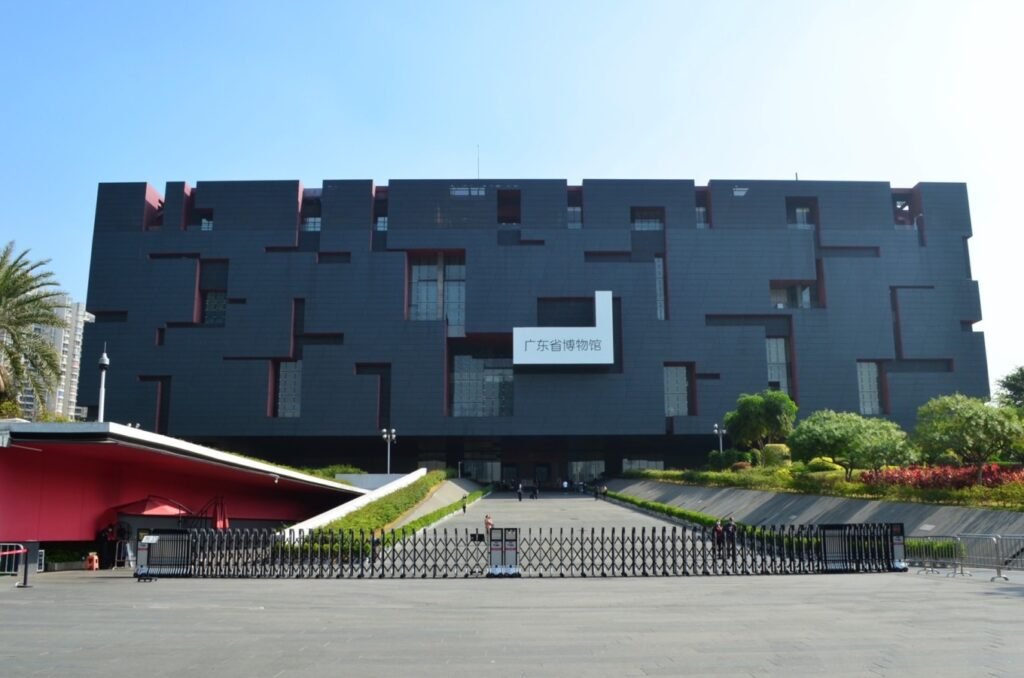
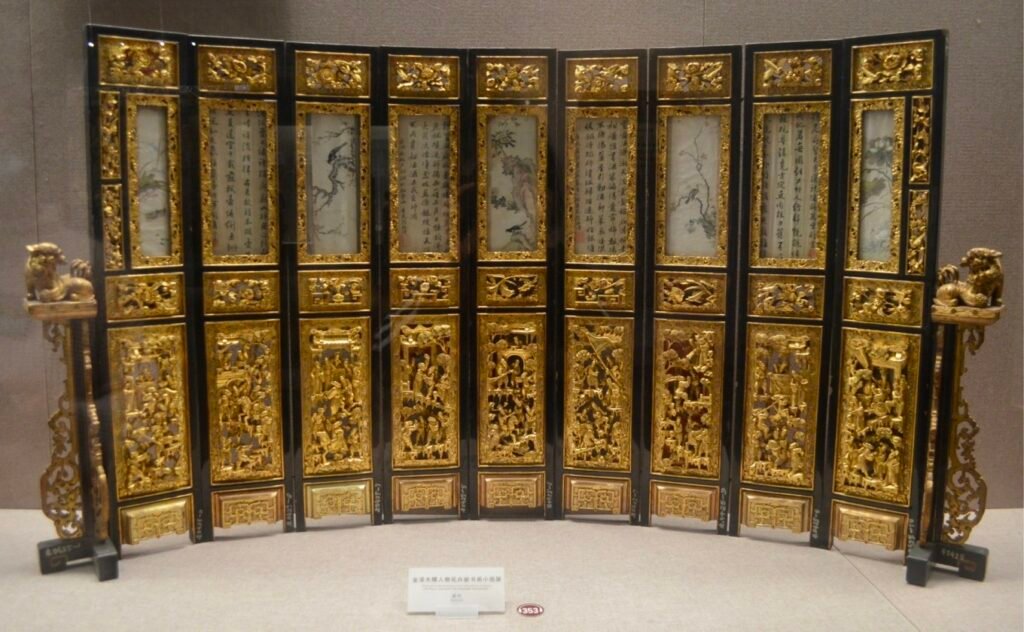
In addition to the many exquisite woodcarvings on display, the museum also provides an overview of the development of woodcarving across different periods, along with detailed explanations of the production process and techniques. For visitors like us, who know little about woodcarving, it’s an engaging and educational experience.
For example, why is camphor wood the material of choice for Chaozhou woodcarving? What are the specific steps involved in the woodcarving process? The exhibits answer these questions in a clear and fascinating way, making the craft more accessible and giving visitors a deeper appreciation for the artistry behind it.
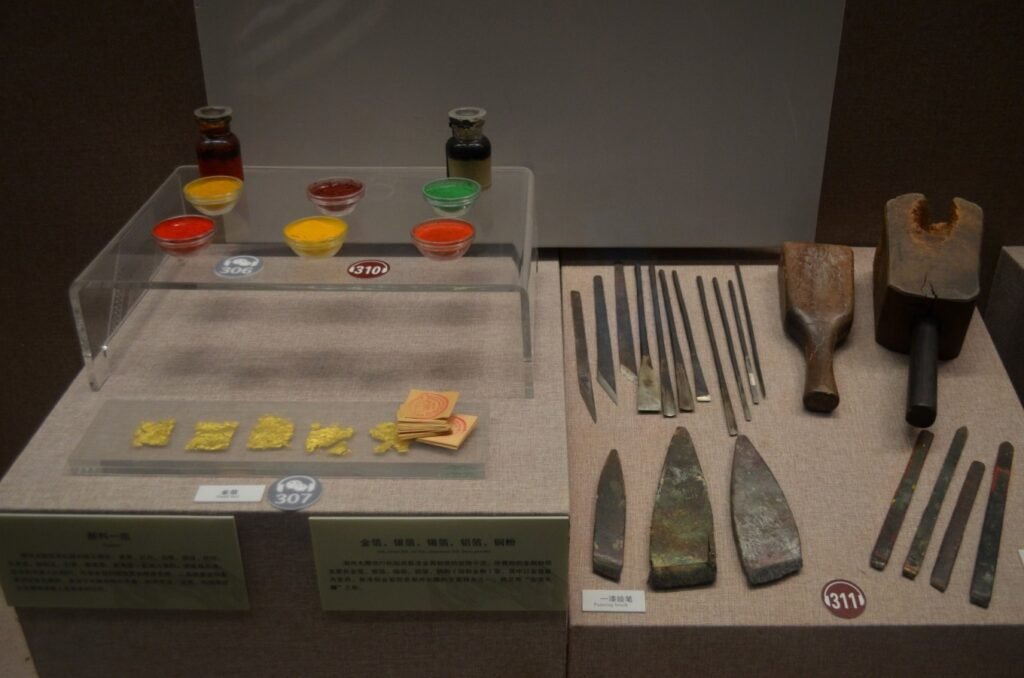
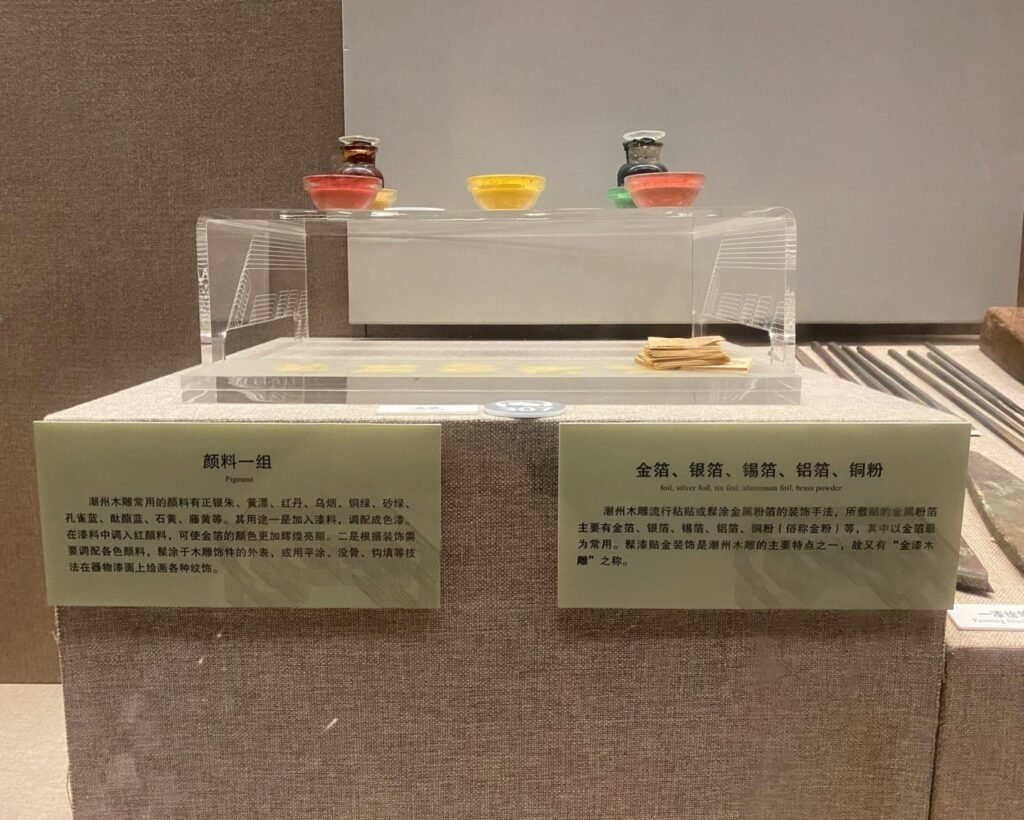
Duan inkstones, also known as Duanxi inkstones, are named after their origin in ancient Duanzhou (present-day Zhaoqing, Guangdong). These stones are renowned for their fine texture, ability to produce ink effortlessly, and excellent water retention without evaporation, earning them the reputation as the finest among inkstones.
Over the centuries, the exquisite craftsmanship of inkstone artisans, combined with the engraved poems and inscriptions from scholars of various eras, has imbued Duan inkstones with profound cultural significance. Evolving from purely functional objects to prized collectibles, they represent a shining gem of China’s traditional craftsmanship.


Additionally, as one of the earliest “open” regions in China with a strong commercial spirit, the museum features a “Republican Era Lifestyle” exhibit. This section showcases artifacts from the period when Chinese and Western cultures began to merge, offering a fascinating glimpse into that era. The display exudes a distinctive “Nanyang” vibe—reflecting the Southeast Asian influence—capturing the openness and cultural inclusiveness that define Guangdong’s character and spirit.
If I were to offer a small suggestion for the Guangdong Museum, especially after having traveled from Nanjing, I’d say there is room for improvement in their cultural and creative merchandise. The museum does have a small gallery dedicated to innovative designs by young designers, which is promising. However, the museum’s gift shops didn’t feature many items that caught my attention. Also, the shops are spread across several locations, and it seems each operates independently. For such a large provincial museum, it would be ideal to have its own exclusive store and brand identity, highlighting its cultural heritage through unique merchandise.
Furthermore, the museum has a spacious layout, but after touring the entire place, I felt the space could be utilized more efficiently. A more compact and cohesive arrangement might enhance the overall experience for visitors.
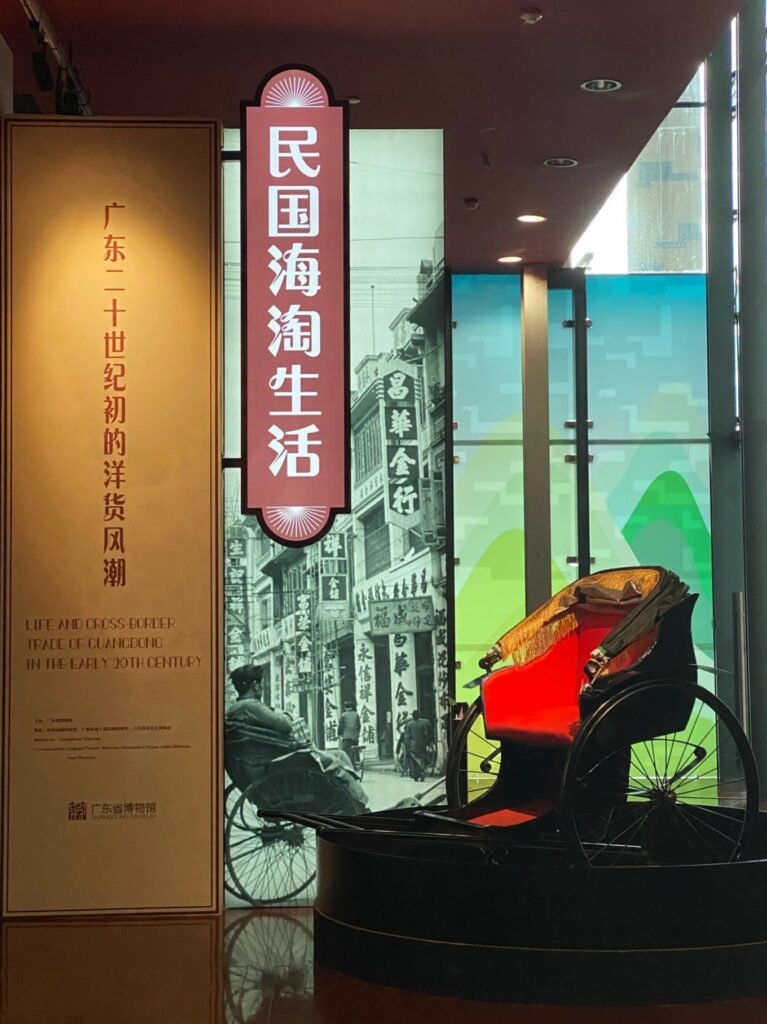
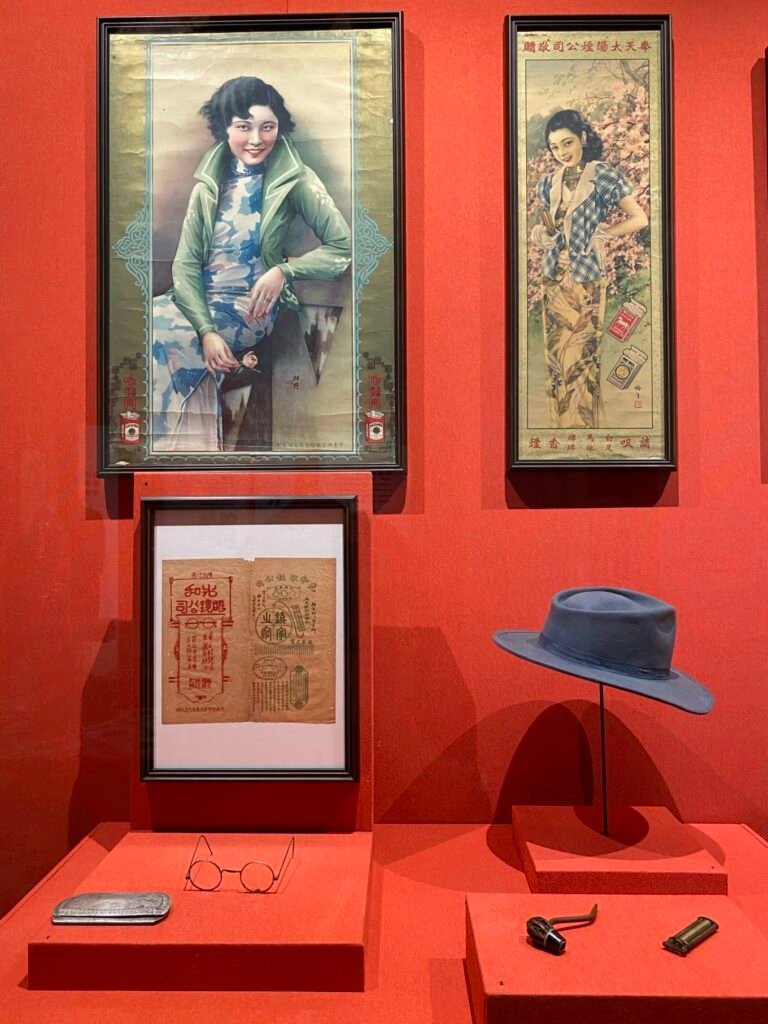
In addition to the museums, Guangzhou is also home to the Zhan Tianyou Memorial Residence and the Ancestral Home of Bruce Lee.
As the local saying goes: “To understand Guangzhou, you must explore Xiguan; and to explore Xiguan, you must visit Enning Road.” Enning Road encapsulates the essence of Xiguan architecture and preserves the rich folk customs and traditions of Cantonese culture. Both memorial sites are located along the legendary Enhua Road, adding to the charm of the area.
The Zhan Tianyou Memorial Residence is somewhat understated, tucked away at No. 42, Yacai Alley, Shierfu West Street, Enning Road, in Guangzhou’s Liwan District. It is a traditional Xiguan-style mansion, carefully preserved in its original form. The exhibits focus on Zhan Tianyou’s life, with personal belongings on display and interviews with his descendants, providing an intimate view of his legacy.
In the garden of the memorial, there is a small section of railway—a miniature model of the “zigzag” track Zhan Tianyou designed for Qinglongqiao Station to overcome the elevation differences between Nankou and Badaling. At the far end of the garden lies an elementary school named in his honor, continuing his legacy in a meaningful way.


In contrast, the Ancestral Home of Bruce Lee is much livelier. This was originally the residence of Lee’s father, Lee Hoi-chuen, and it too is a Xiguan-style mansion.
Right in front of the house stands a martial arts training frame. When we entered, we even saw a master practicing martial arts there. Inside the ancestral home, in addition to exhibits about Bruce Lee and his family, the building itself offers many features that reflect Lingnan culture. For example, it has traditional Manchurian windows and decorative grey plasterwork—both distinctive elements that are well worth seeing.
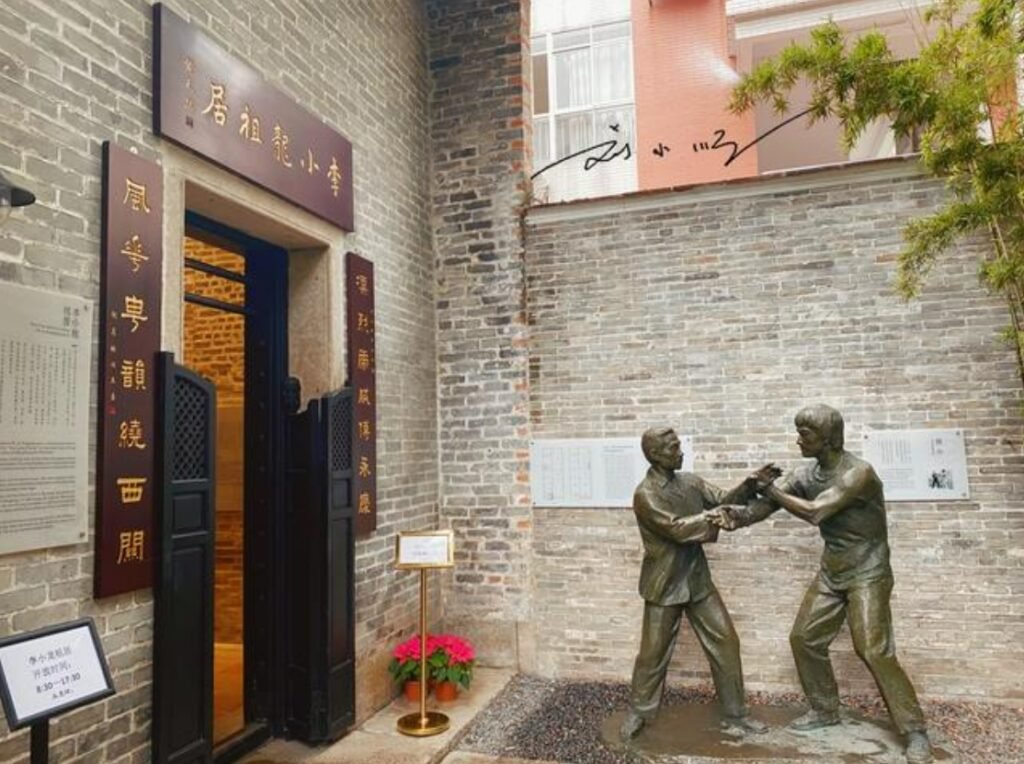
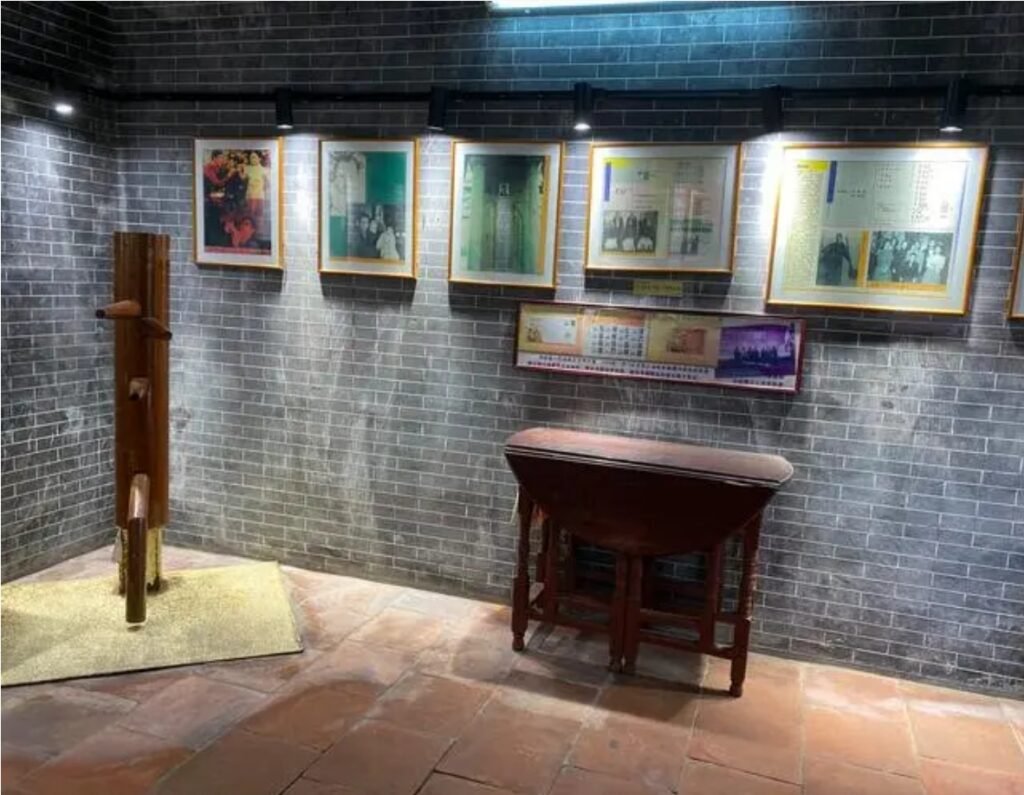
Bruce Lee’s ancestral home is located near Yongqingfang, an area that has received considerable attention from the local government. Renovation efforts officially began in 2015, with a focus on preserving the historic charm while breathing new life into the old streets. The results have been impressive, successfully revitalizing the area while maintaining its original character.
In a city as ancient as Guangzhou, historic neighborhoods are plentiful. However, as you wander through different districts, it becomes clear that the conditions of these old streets vary. Some have been meticulously restored, while others still await similar efforts to bring out their full potential.
Night Cruise on the Pearl River
Speaking of Enhua Street in Xiguan, beyond the memorial residences of famous figures, the kilometer-long street also features many charming qilou buildings, infused with the spirit of overseas Chinese communities. Qilou are a type of modern commercial-residential architecture, where the ground floor is set back from the street, creating a public walkway underneath. From a distance, these buildings seem to “ride” above the street. On hot or rainy days, people can stroll comfortably under the qilou, making them a practical feature of urban life.
The modern concept of qilou originated with British colonialists, who first introduced similar structures in India to create cool, comfortable living spaces in tropical climates. The design, which added covered corridors at the front of residences to provide shade, gradually spread with British influence from South Asia to Southeast Asia and Northeast Asia, adapting along the way to local conditions. The practicality of qilou—providing protection from rain, sun, and wind—made them especially popular throughout Southeast Asia.
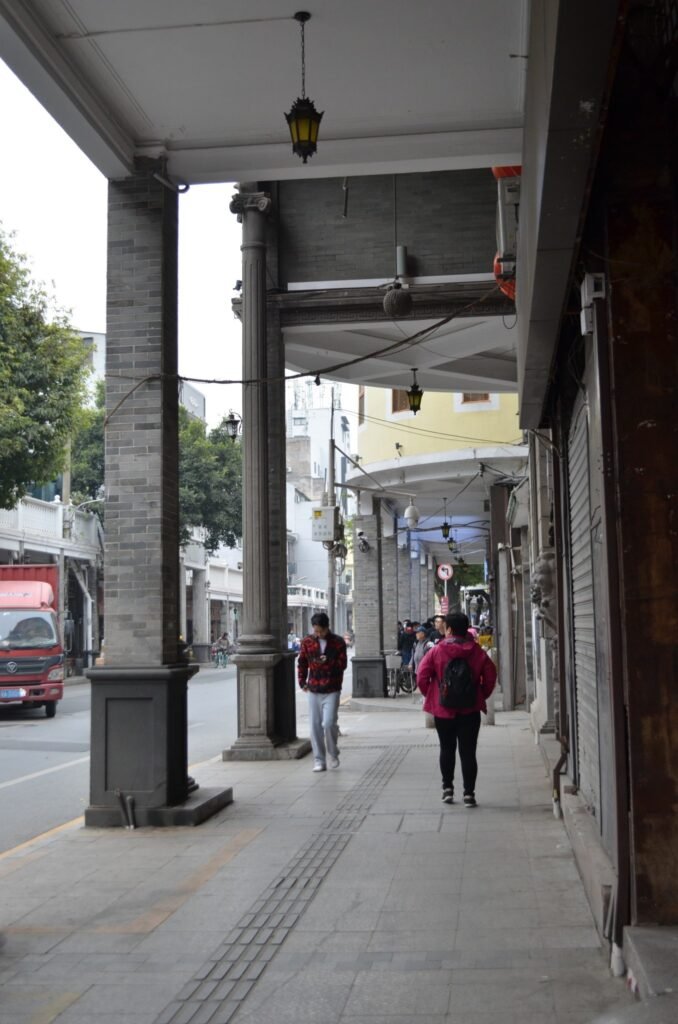

Speaking of the fusion of East and West, one cannot overlook Shamian Island.
Located on the western side of Guangzhou along the Baietan section of the Pearl River, Shamian Island covers just 0.3 square kilometers. Surrounded by water, the island is shaded by lush trees and adorned with vibrant flowers. After the Opium War, parts of the island were ceded to the British and French as concessions, leading to the construction of many Western-style buildings.
Following the founding of the People’s Republic of China, Shamian Island retained much of the 19th-century European architectural charm from the British and French concessions. Today, it is a well-known diplomatic and historic preservation area in Guangzhou. Visitors can see notable landmarks such as Christian churches, the former HSBC Bank building, and the old British and French consulates, as well as various other consulates and foreign affairs offices.
The ancient trees lining the streets are living witnesses to the island’s long history. Its unique past, along with the Baroque and Neoclassical architecture along the streets, gives Shamian Island a strong, exotic charm. The tranquil atmosphere makes it a delightful place to explore. Scattered around the island are numerous cafés, restaurants, flowers, wooden benches, and interesting sculptures, creating an environment that blends the elegance of Western Europe with the distinct essence of Lingnan culture. Shamian Island is truly a romantic, idyllic, and rare gem in the heart of the city.
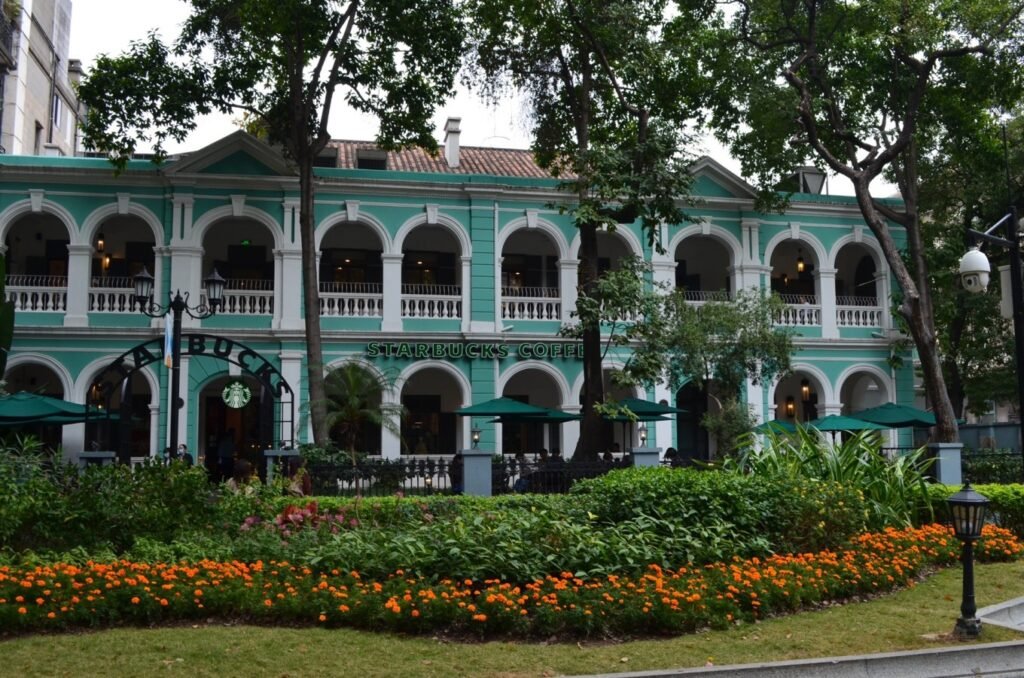

One of the most iconic buildings on Shamian Island is the White Swan Hotel.
Before coming to Guangzhou, I had watched a documentary about this landmark, which left a deep impression on me with its seamless blend of Eastern and Western elements. So, visiting Shamian Island meant that I had to see it in person.
The White Swan Hotel opened in 1983 as the first five-star hotel in China to be co-invested by a private entrepreneur and a provincial government. It was a collaboration between businessman Henry Fok and the Guangdong Provincial Government.
The hotel’s interior is said to embody the essence of traditional Chinese and Lingnan-style gardens, which has made it a popular destination for tourists curious to experience its unique design. What’s truly remarkable is that the hotel welcomes visitors, allowing them to enter the atrium and explore the enchanting Lingnan-inspired setting inside.

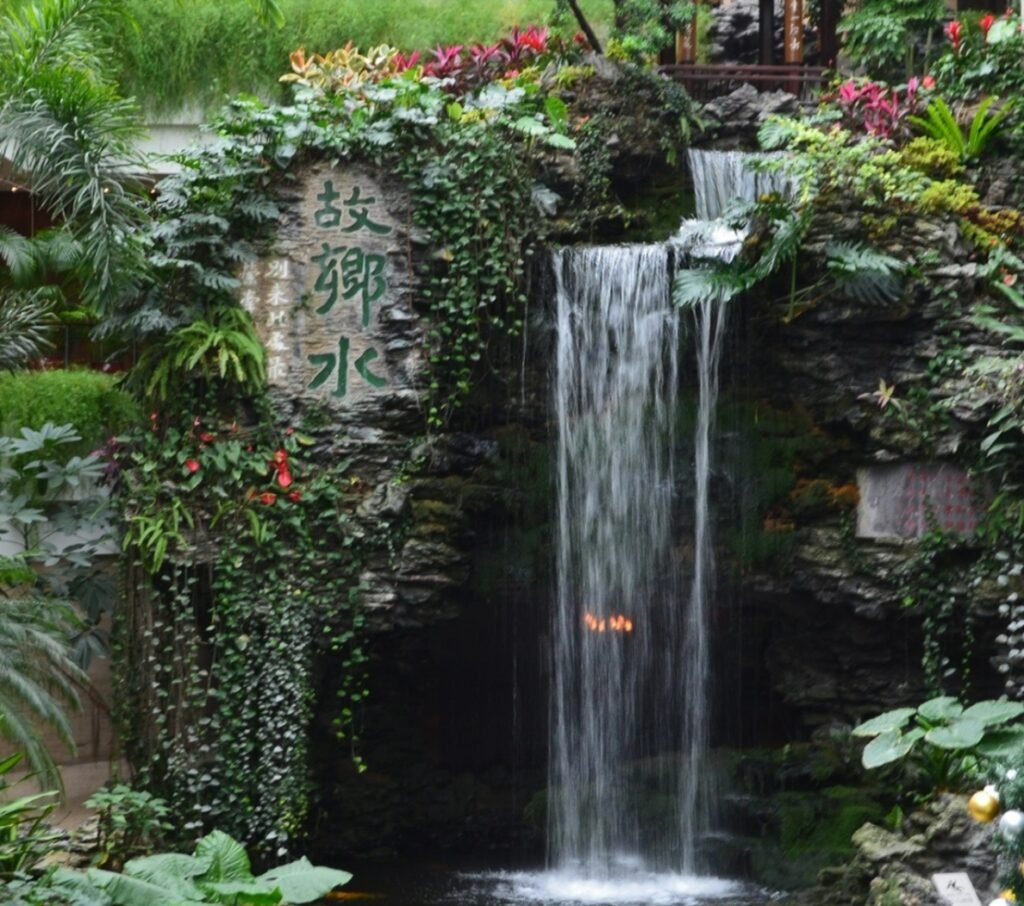
A visit to Guangzhou wouldn’t be complete without a night cruise along the Pearl River.
There are plenty of cruise options and boarding piers to choose from. Since we didn’t have any special expectations, we opted for a simple, no-frills night cruise. Once the ship set sail, passengers freely roamed around, so having a good seat wasn’t much of a concern for us.
The highlight of the cruise is undoubtedly Guangzhou’s iconic Canton Tower, nicknamed the “Little Waist” for its slender shape. As the boat neared this landmark, many passengers rushed to snap photos, caught up in the excitement.
Overall, the Pearl River is quite broad, so the attractions along the way are somewhat spaced out. However, sailing on the river at night, feeling the southern breeze on your face, watching the water ripple under the lights, and seeing the dazzling skyline in the distance made for a memorable experience. It was one of those moments worth savoring.


Delicious Food in Guangzhou
The reason I prioritized Guangzhou on my travel itinerary, ahead of many other cities, wasn’t just because of the warm winter weather. The biggest draw was a documentary I stumbled upon called Old Guang’s Flavor and some mouth-watering food videos from Guangzhou I found on YouTube.
When it comes to Guangzhou’s cuisine, even after eating non-stop for an entire week, I still didn’t get through all the dishes I wanted to try—let alone dive deeper into discovering hidden food gems. For most tourists, the city’s morning tea culture, or yum cha, is the most familiar part of its culinary scene.
Before my trip, my knowledge of Cantonese cuisine was limited to tea restaurants back home, like “Thousand Day Banquet” or “Tsim Sha Tsui.” When I first heard colleagues mention “Dim Sum,” I was puzzled. It wasn’t until I looked it up that I realized it was the Cantonese word for “点心” (diǎn xīn).
With limited time, I only managed to try two of the most famous yum cha spots: Tao Tao Ju and Dian Dou De. At these restaurants, I not only got used to ordering by starting with what type of tea I wanted but also learned the local custom of rinsing dishes and utensils with hot water before eating.
Tao Tao Ju, a time-honored establishment, lives up to its reputation with consistent quality and a pleasant atmosphere. Meanwhile, Dian Dou De also left a lasting impression. I can still recall the taste of their red rice shrimp rolls, and I was amazed to try the sweet monk fruit tea (罗汉果茶) for the first time—so much so that I ordered some online afterward!
One thing that stood out to me is the leisurely vibe in many Cantonese restaurants. It’s common to see groups of elderly folks enjoying their meals and conversations, fully embracing life. Some places, like Dian Dou De, even offer discounts for seniors, encouraging young people to bring their parents out for tea and meals. This thoughtful gesture by these businesses truly left me feeling touched.
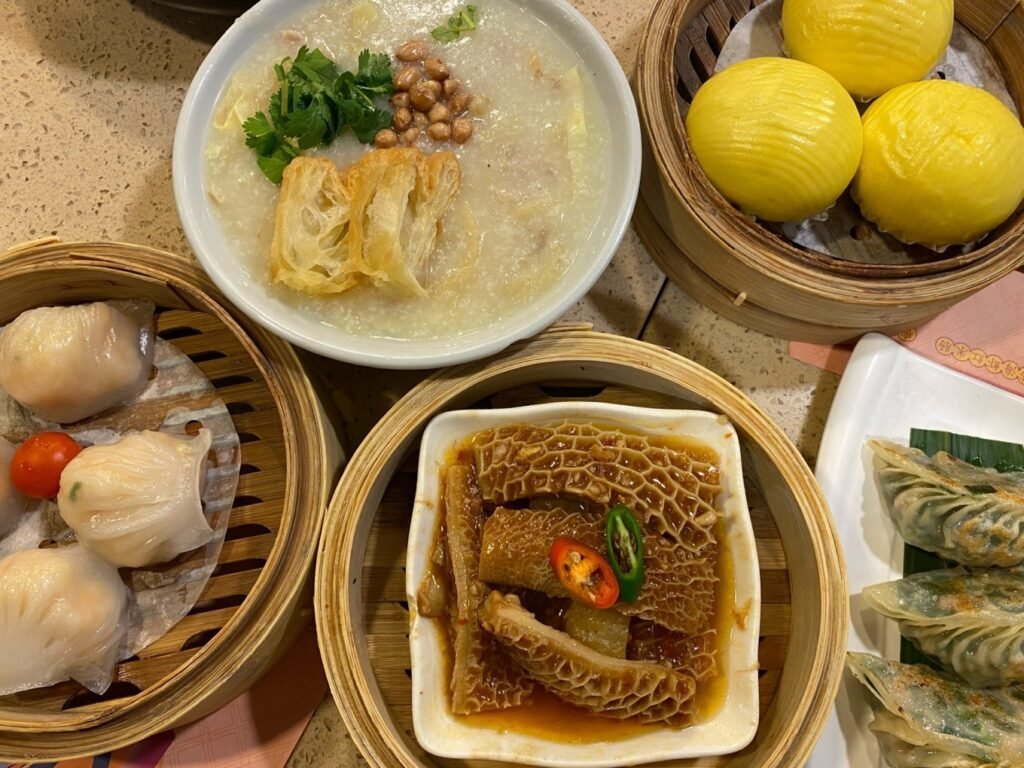


I also highly recommend Wu Zhan Ji Congee. We tried the Liwan Boat Congee, Jidi Congee, Dechang Savory Fried Dough, and Stir-Fried Beef Rice Noodles, and everything was delicious. The place was bustling with customers, coming and going non-stop. What surprised me most was how much I enjoyed the congee in Guangzhou. I usually avoid congee, but seeing how richly it was prepared—with ingredients like pork liver and seafood, simmered to perfection—I found myself hooked and unable to stop.
Another memorable spot was Nanxin Milk Dessert Specialist, where we ordered the Double-Skin Milk with Red Beans, Ginger Milk, and Black Sesame Soup. Interestingly, the first two weren’t very sweet, but the sesame soup turned out to be the sweetest of the three. The flavors were excellent, and it’s a shame I didn’t get a second chance to try more of their desserts, like their wontons.
There was also Yuan Ji Dumplings, a chain restaurant near where I stayed. While it wasn’t particularly special, it was incredibly convenient, clean, and well-managed, with excellent service. They offer breakfast discounts, and you can even buy raw dumplings to cook at home. This simple yet thoughtful touch added to the charm of the place.

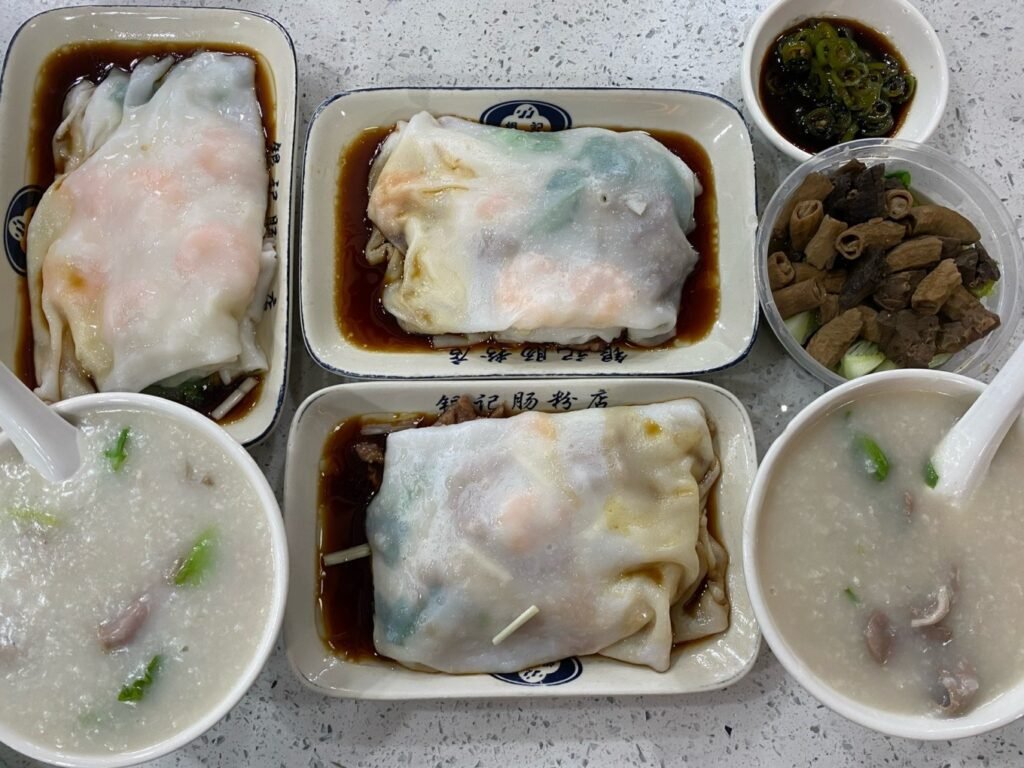
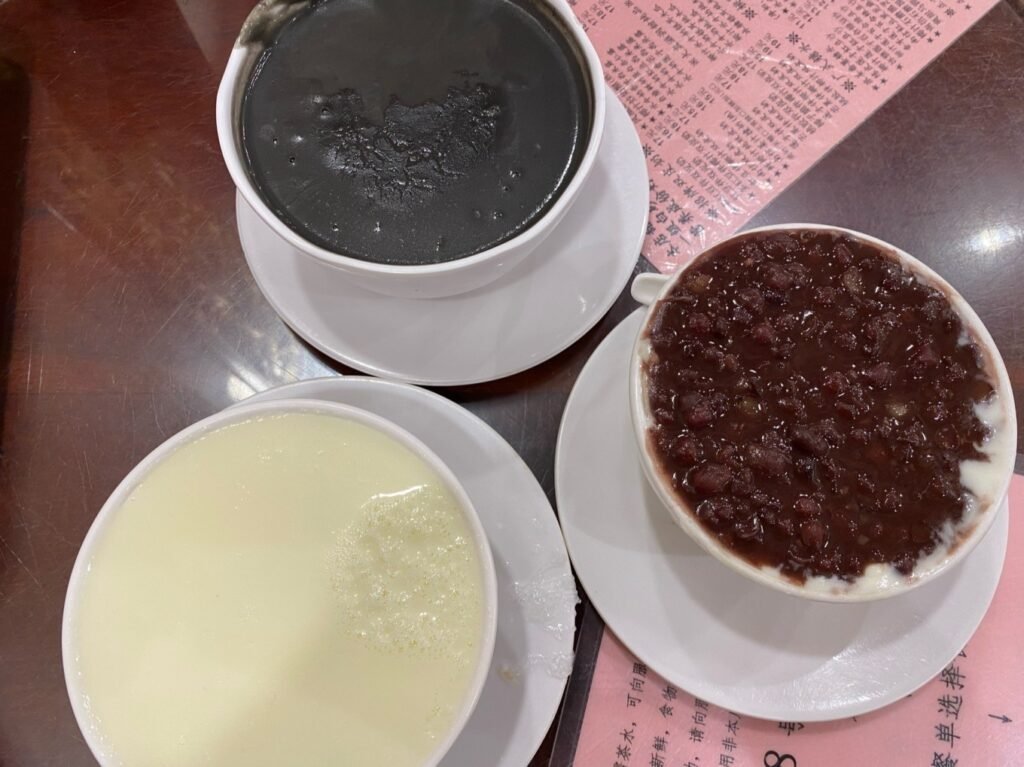
My journey to Guangzhou was incredibly rewarding. Beyond the culinary delights, the real joy and fulfillment came from learning about Lingnan culture from scratch. Although my understanding is still quite shallow and partial, and I did sense some cultural contrasts along the way, I’ve come a long way from the initial confusion and disorientation I felt when I first arrived.
I believe that whether it’s understanding the diverse cultures within China or bridging the cultural gaps between China and the rest of the world, curiosity and a willingness to learn are essential. Only through mutual exploration and understanding can we truly connect and grow together.


